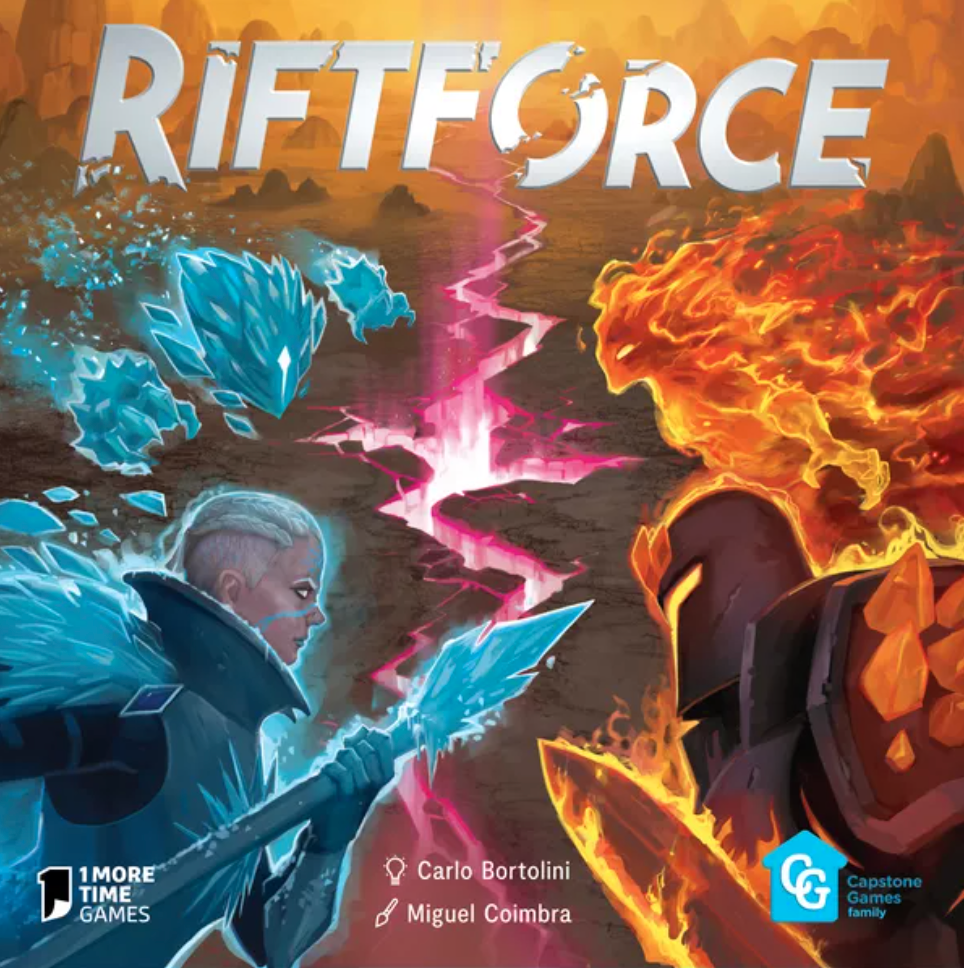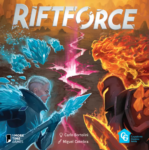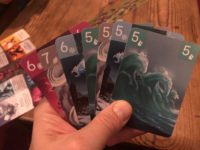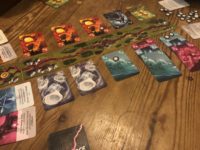- Learning time
- 30 minutes
- First play time
- 40 minutes
Riftforce
Designed by: Carlo Bortolini
In Riftforce players fight head-to-head over the rift in question, which is made up of cards simply laid end to end across the table (it also has a space for tracking points). Alternating in turn, players choose to either play cards to the rift, activate cards on the rift, or refill their hand.
You need to play cards to the rift before you can activate them, and you need to refill your hand reasonably frequently as you run out of cards often. But activating the cards is the heart of the game. Players each have four different suits (of ten available) and each suit has a special power that is destructive to your opponent and beneficial to you. Every card has a point value, and when the value reaches zero thanks to damage from the other side, the card is removed from the game: removing opponent cards scores you a point (sometimes more) and as ten points wins you the game, this is critical.
You also score points whenever you refill your hand: one for each section of the rift you control, and control simply means having any cards in a section where your opponent is absent. So timing these moments is critical too. But the game thrives on the way cards are played; a really canny system that lets you play up to three cards of a matching number or suit, either to the same section of the rift or across adjacent sections. And then activating works in a similar way: you discard a card from your hand to activate up to three cards at the rift with a matching number or suit as well (not a mixture of the two). We won’t list all the powers here and how they work, but suffice to say they’re relatively straightforward and easy to grasp. The ideal is not a scattergun trying-of-powers (although that’s inevitable on a first play) but finding ways to combine them in the best possible ways for you, and the worst for your opponent.
Play continues until either player reaches ten points, then the game ends when both players have had an equal number of turns (ie it’s possible the first to reach ten points may still lose if they were the starting player!)
The guru's verdict
-
Take That!
Take That!
The game is a battle, so there's plenty of that to be taken
-
Fidget Factor!
Fidget Factor!
Low. Although the odd turn might need a little thought as to your best move, the game largely moves very fast
-
Brain Burn!
Brain Burn!
It's all about synchronising your cards to maximise their effects - a little planning ahead is needed, a little reading what your opponent may do, a little luck
-
Again Again!
Again Again!
Very varied in each play, thanks to the multitude of potential combinations the special powers give you.








Sam says
A very clever game in how multiple sets of rules interlink, overlap or otherwise interact with each other in a way that's really dynamic, but without being overwhelming or confusing. It's a straight-up fight, really, but because of how the cards sync - potentially - with each other in terms of suit, number and location, far more engaging than it might sound. For my personal peccadillos the constantly-changing paradigm of what the game consists of isn't something I'd usually seek out, but Riftforce does it extremely well.